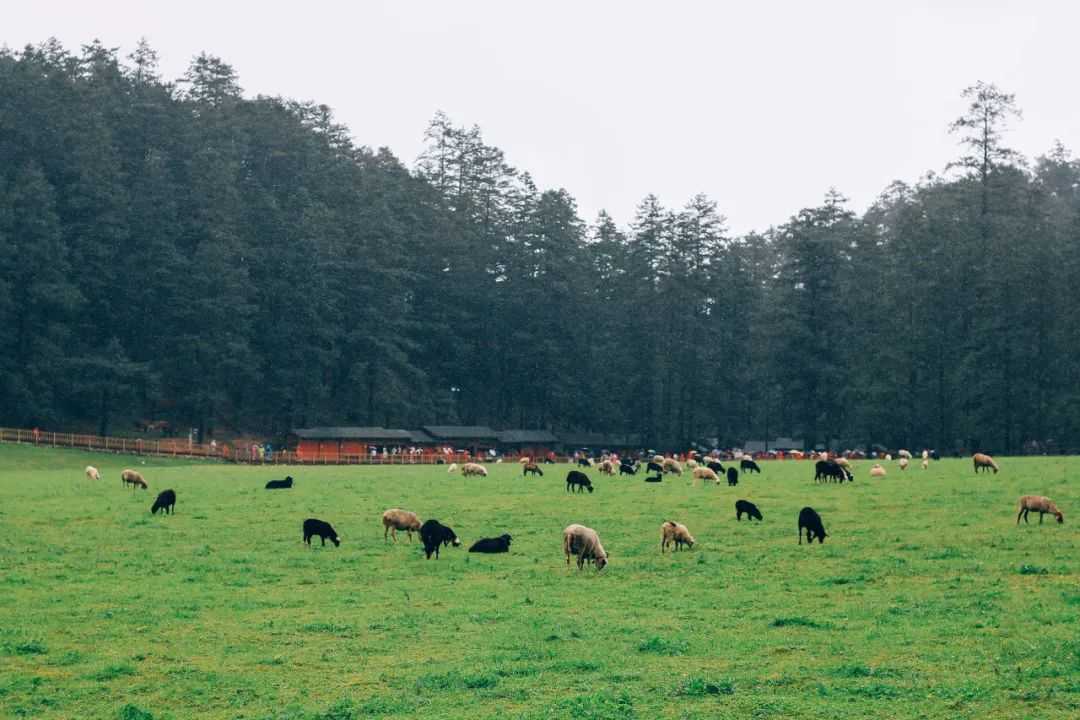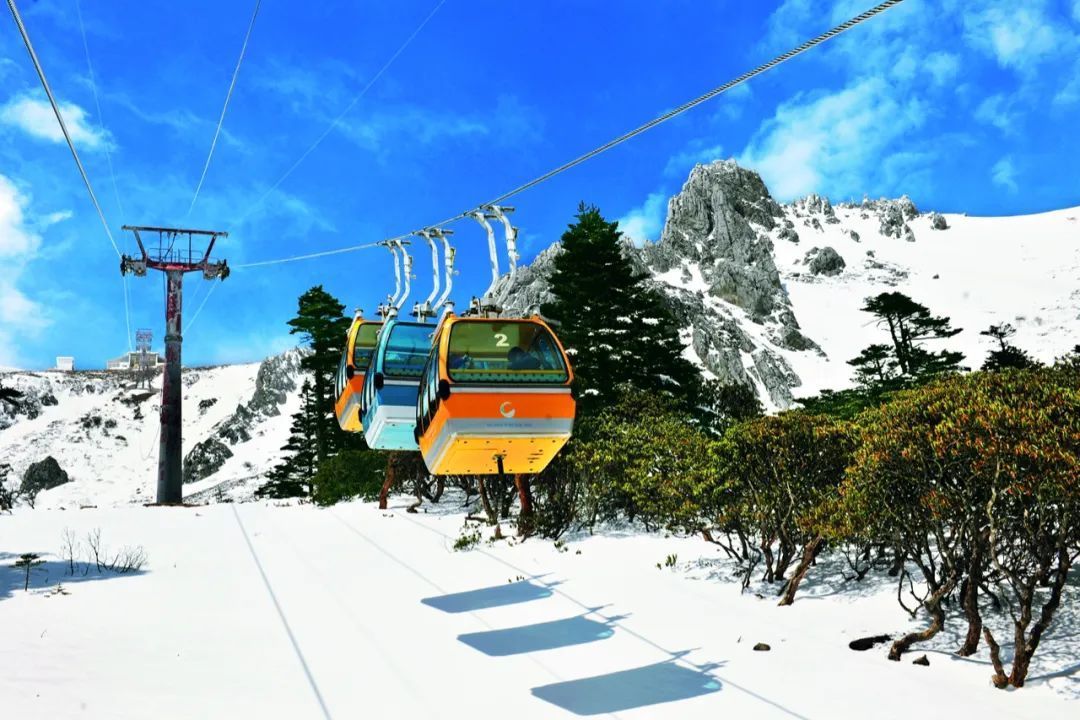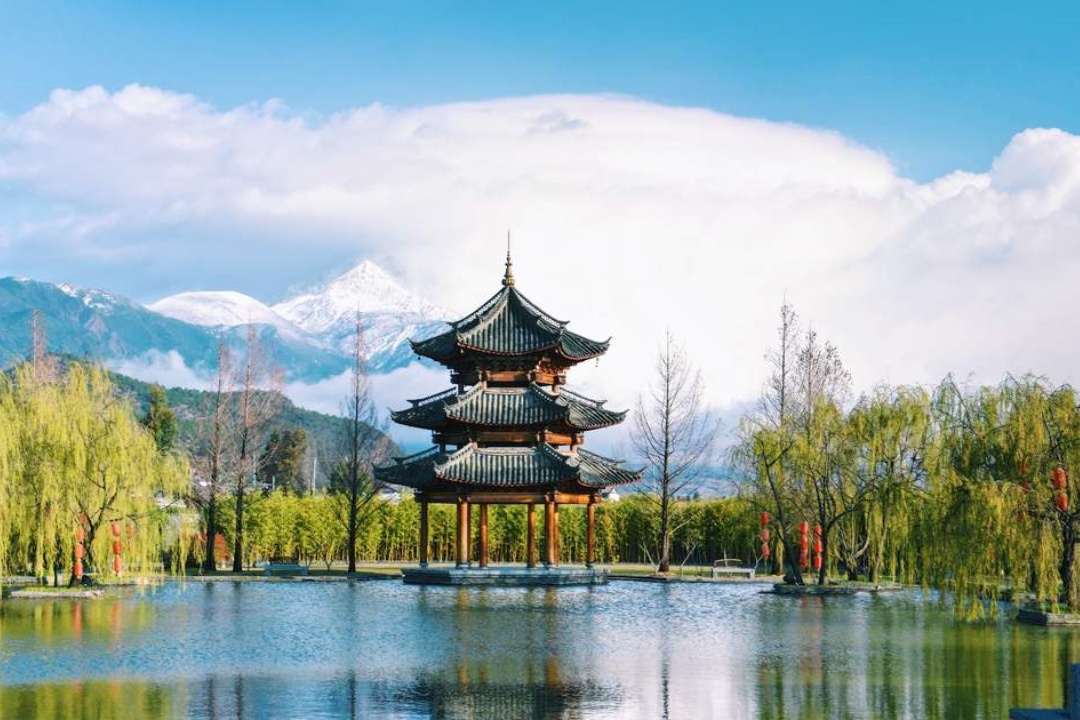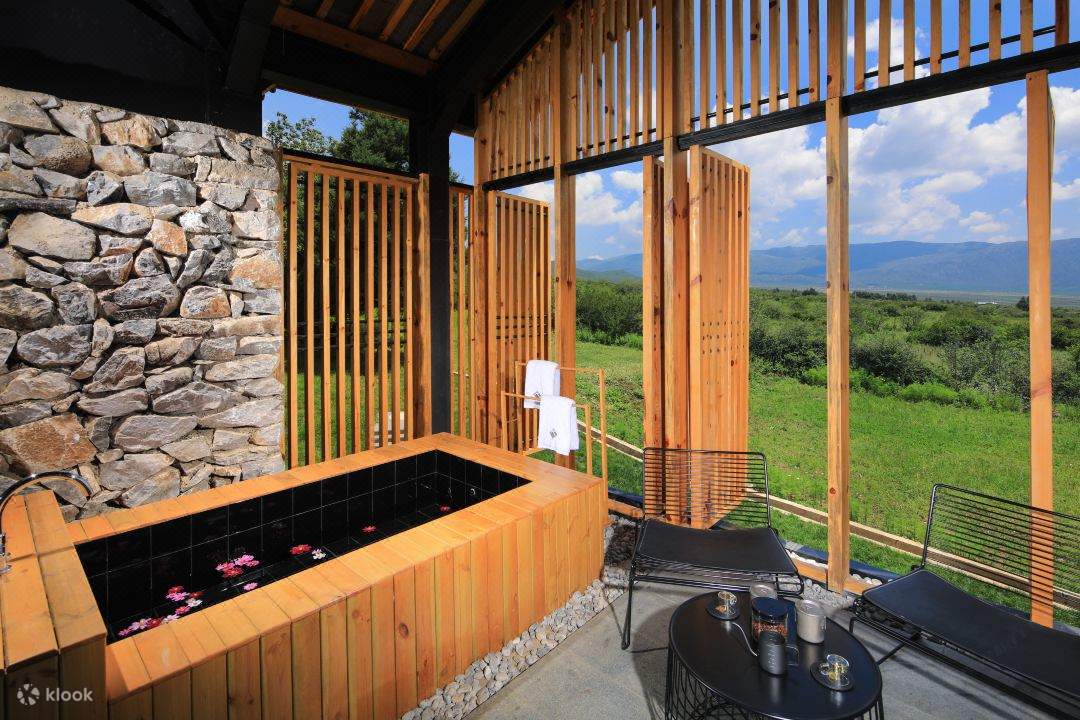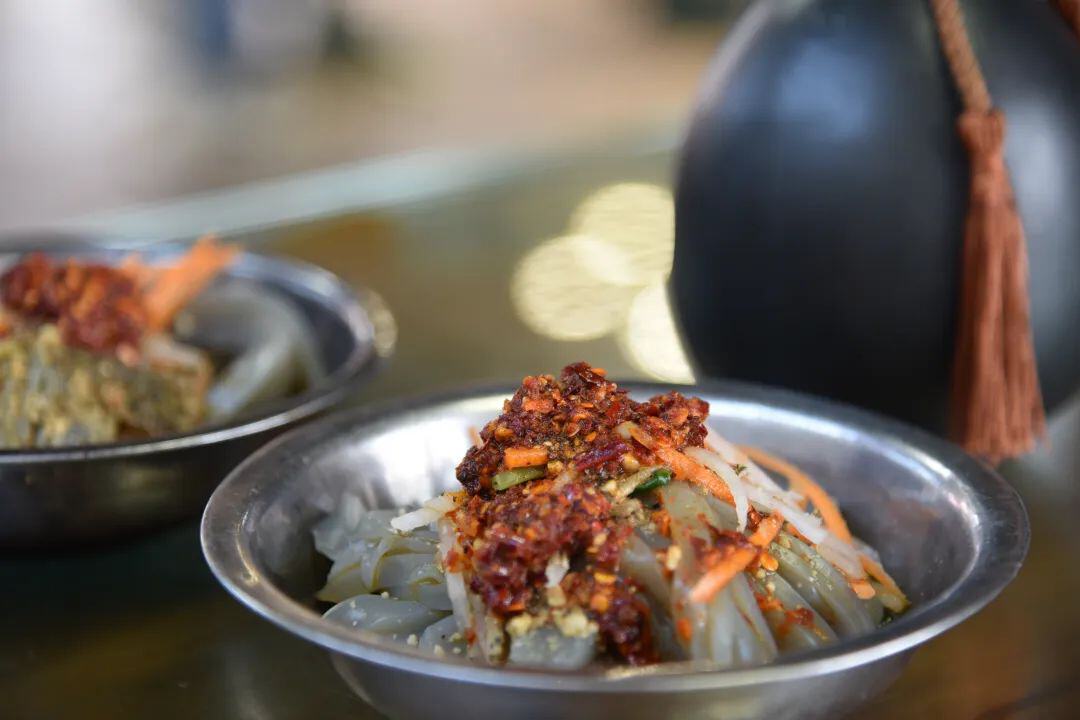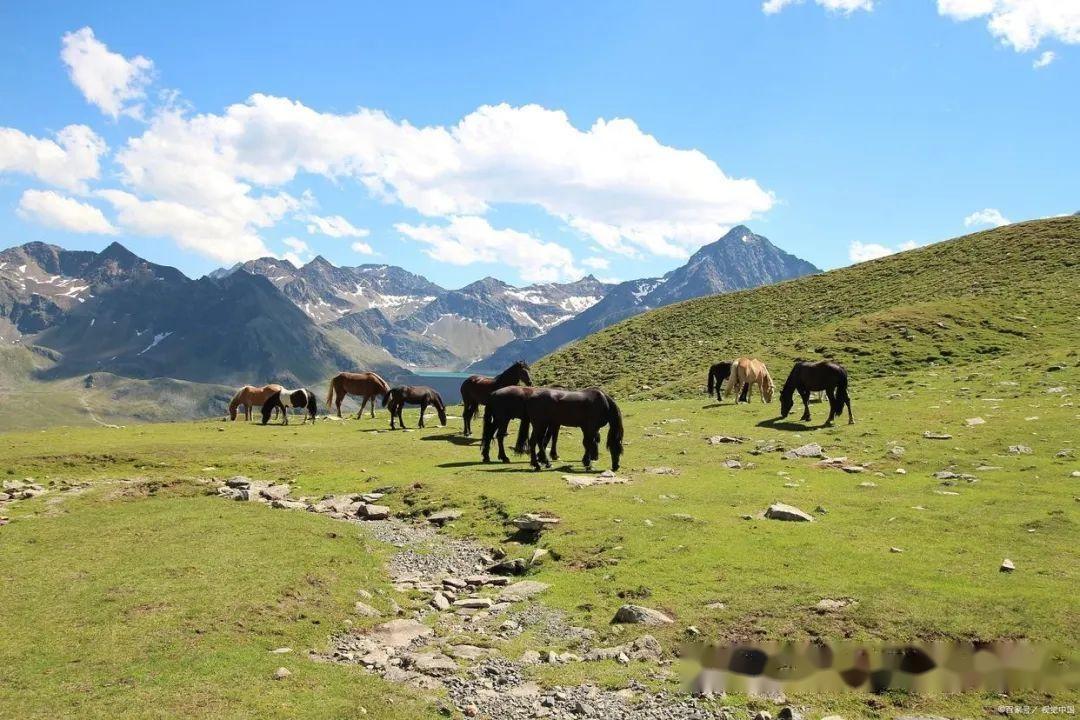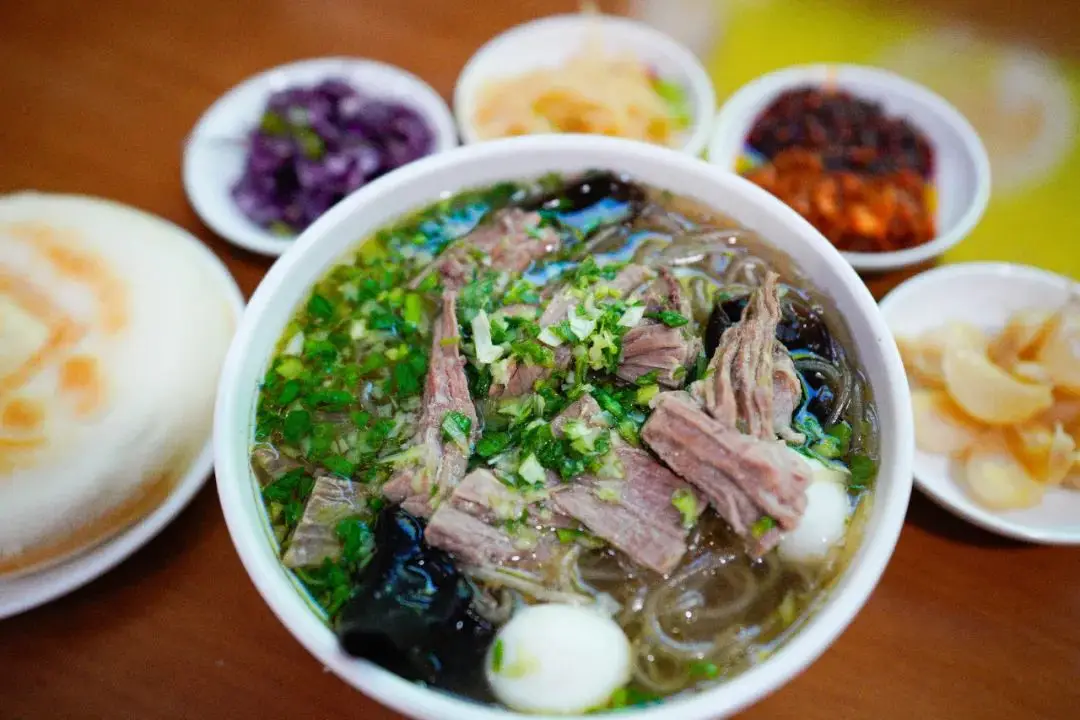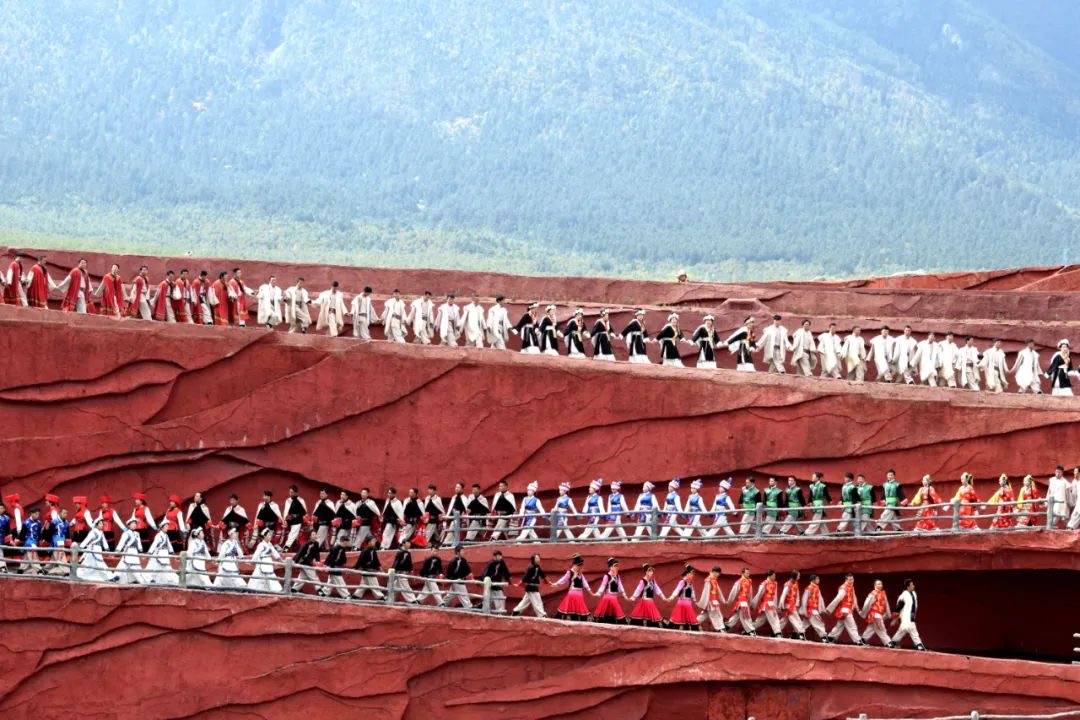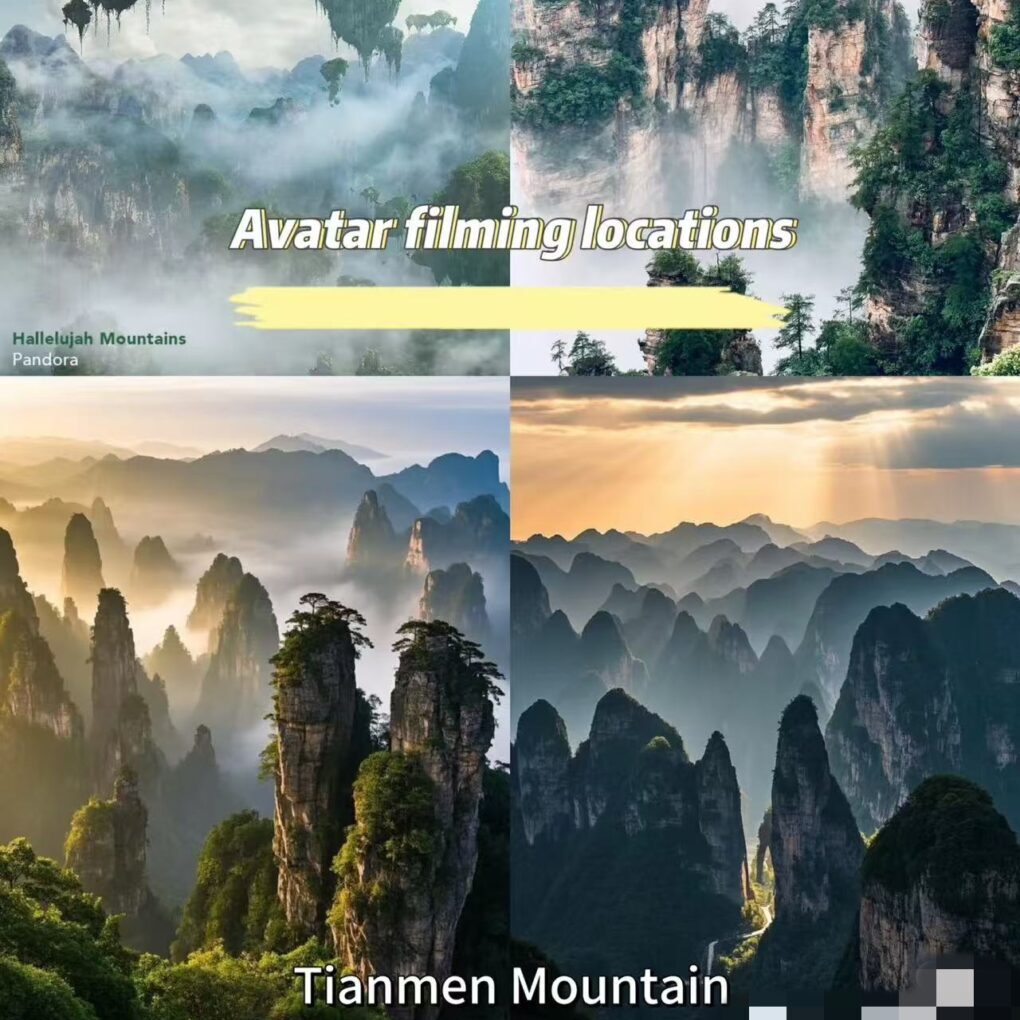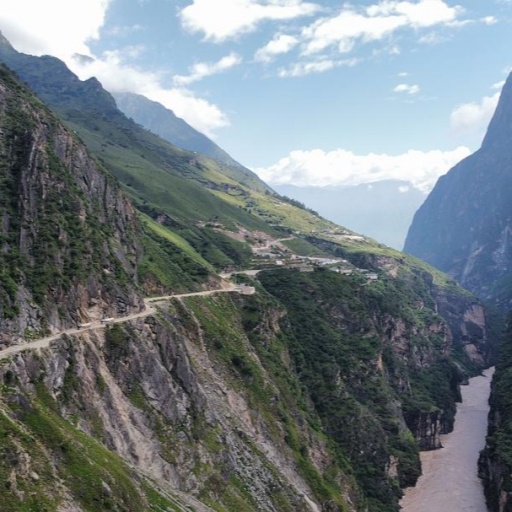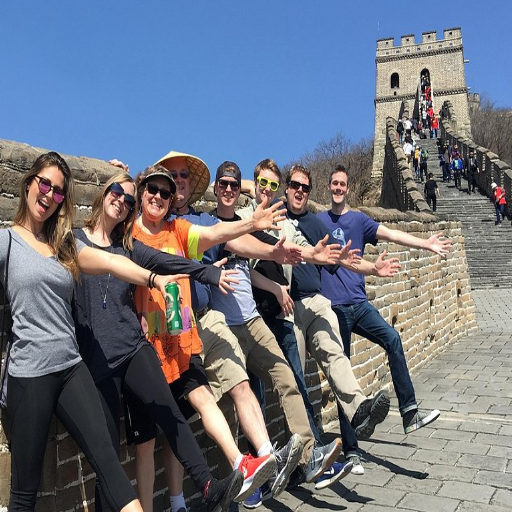I didn’t come to Jade Dragon Snow Mountain looking for answers. But somehow, the mountain gave me one anyway. Cloaked in fast-moving clouds and ancient whispers, this wasn’t just a peak—it felt like prophecy carved in snow. Locals call her the guardian of Lijiang. Naxi legends say her 13 peaks echo the voices of gods, and when the light hits just right, she speaks through shadow and ice.
This isn’t a travel guide in the traditional sense. It’s a map of moments—ones that linger. From a grandmother murmuring prayers at 4,506 meters to murals fading in Baisha’s silence, every encounter here felt deliberate. If you’re coming just for the altitude or selfies, you might miss the story. But if you let her, the mountain will show you something else. Every snowflake here has a story—and this is mine.
When the Clouds Part: First Glimpse of the Mountain’s Voice
From 4,506 to 4,680 Meters: Thin Air, Thick Meaning
The moment I stepped off the cable car at 4,506 meters, everything went quiet. Not just around me—but inside me, too. The air was crisp and light, almost too light. My boots crunched into frost as I took my first step onto the Glacier Park Platform, and there she was—Jade Dragon Snow Mountain, rising like a wave frozen mid-roar. No filter, no crowd noise—just raw height, cold breath, and endless white.
People around me went still. A few whispered. Some just stared. On a clear day, the clouds cast moving shadows on the snow, and you can spot Lijiang Old Town like a tiny diorama far below. Don’t be in a rush here. Take your time. Sit if you need to. The altitude isn’t just physical—it changes your pace, your thoughts, the way you see things. It’s like being dropped from a warm courtyard into a silent cathedral of ice.
Even in summer, snow might fall. Up here, seasons blur. Bring real layers—not just a hoodie. Gloves, windbreakers, and something to cover your ears are the bare minimum. I saw someone in sneakers shivering against a railing. Don’t be that person.
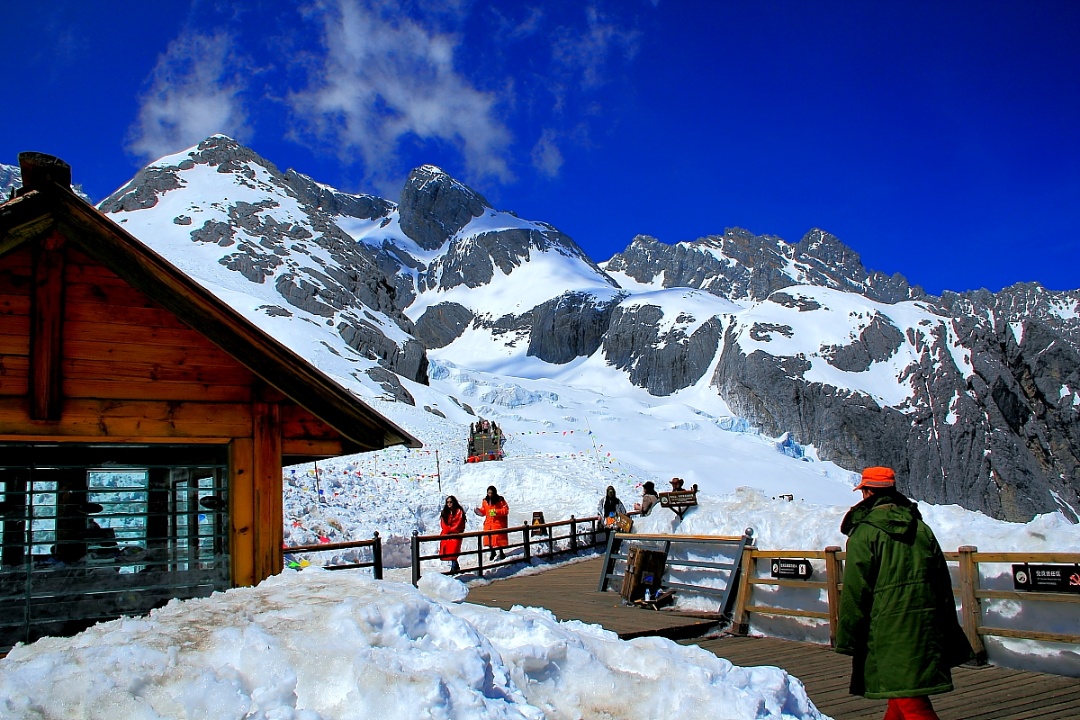
Jade Dragon Snow Mountain
The 4,680m Trail: Where the Crowd Thins and the Heart Opens
The hike to the 4,680-meter marker is short on paper but long in breath. It takes 30 to 45 minutes depending on your pace, but every step feels earned. The trail is steep and slippery, the air thinner with every breath. But the higher you go, the quieter it gets—not just because of fewer tourists, but because something shifts inside you.
Halfway up, I passed a woman from France walking with careful, measured steps. We didn’t say much—just nodded and kept moving. At some point, words feel unnecessary. When you reach the top, there's no big sign or photo booth—just a plateau, some fluttering prayer flags, and the sound of wind threading through rock. It feels ancient, like the mountain is whispering back.
Bring oxygen if you’re unsure. I used mine halfway up, not out of panic, just to slow my racing heart. The altitude demands humility. Don’t carry too much. Just water, something warm, and the willingness to pause. Standing there, above nearly everything, I felt small—but also grounded, like I’d left something heavy behind and brought something lighter down.
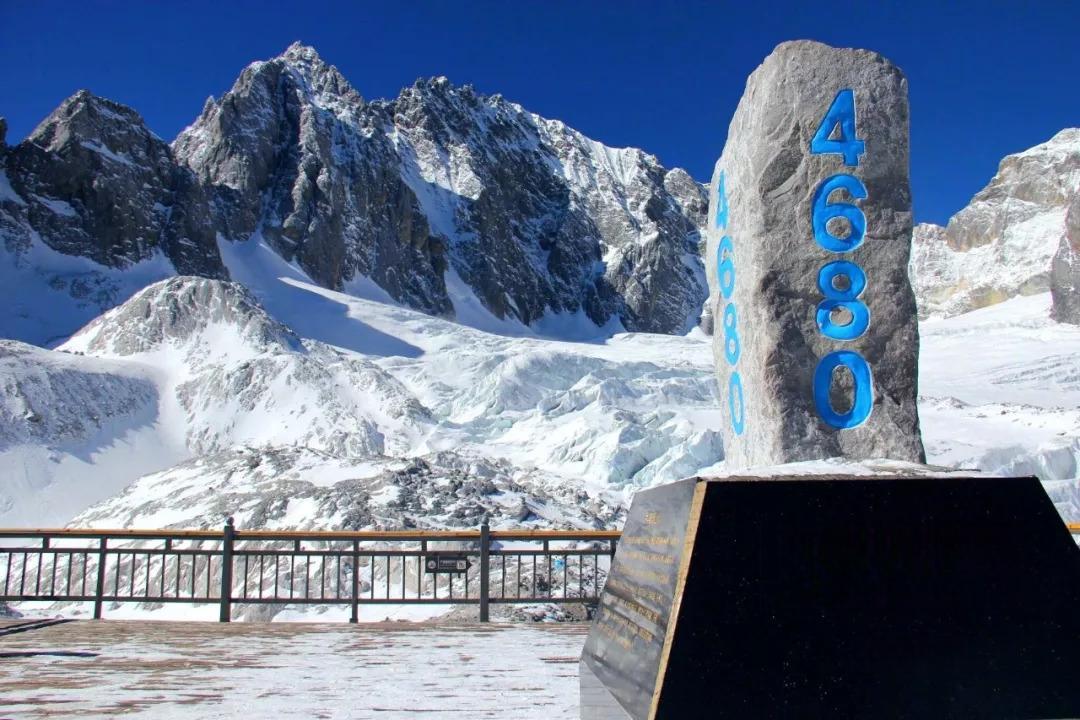
4680 Observation Deck
Climbing into Myth: Glacier Platforms and the 4,680m Moment
A Prayer at Altitude: The Turning Grandma with the Prayer Flags
She wasn’t in any travel brochure. No tour guide mentioned her. But the moment I saw her, something shifted. An elderly Naxi woman—maybe in her eighties—was slowly walking in circles at the Glacier Park platform, a bundle of prayer flags on her back, her hands folded, her lips silently moving. No posing. No phone. Just presence.
I approached gently and asked, in slow Mandarin, why she came so high. She looked at me, eyes clear and steady, and said, “This is the house of the mountain god. We should visit, at least once in life.” Then she turned and kept walking, prayer beads clicking like a clock without numbers. Around her, people with selfie sticks paused. Some lowered their cameras. For a moment, everyone just watched.
That encounter changed the way I saw everything that day. The mountain wasn’t just dramatic scenery anymore—it felt alive. I realized that in places like this, belief isn’t performed, it’s lived. The silence became sacred. Even the wind felt like it carried stories, not just cold. I stayed longer than planned, just listening to the mountain breathe.
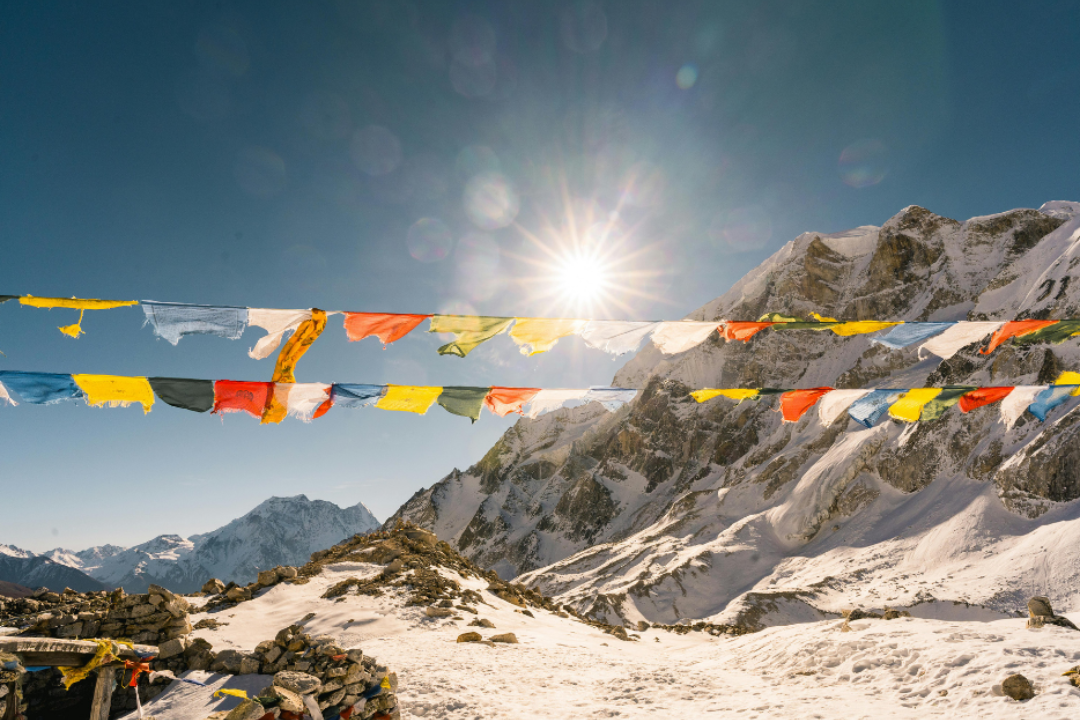
Prayer flags
Baisha Town and the Faded Murals
If Jade Dragon Snow Mountain is the body, Baisha is its memory. Just 30 minutes from Lijiang, this quiet town hides in plain sight. Its old walls hold Ming Dynasty murals, faded but full of life. I walked into a temple where Tibetan, Taoist, and Dongba symbols shared space—like a visual language of Yunnan’s layered soul.
The colors were cracked. Some parts were gone. But I stood there, silent, staring at a mural of a white-robed sage riding a tiger. Next to him, a monk offered flowers to a snow-capped peak. It hit me then—this mountain had been sacred for centuries. Not for Instagram, not for selfies. For real reasons. For prayers.
A local guide told me the village is trying to preserve the murals without over-restoring. Tour groups rarely stop here, which is good. I left a donation and lit some incense. Then I sat by a tea stall outside, sipping something herbal and munching on a sticky dragon boat festival food wrap a local had gifted me. It felt like sitting inside a forgotten chapter of China’s history.
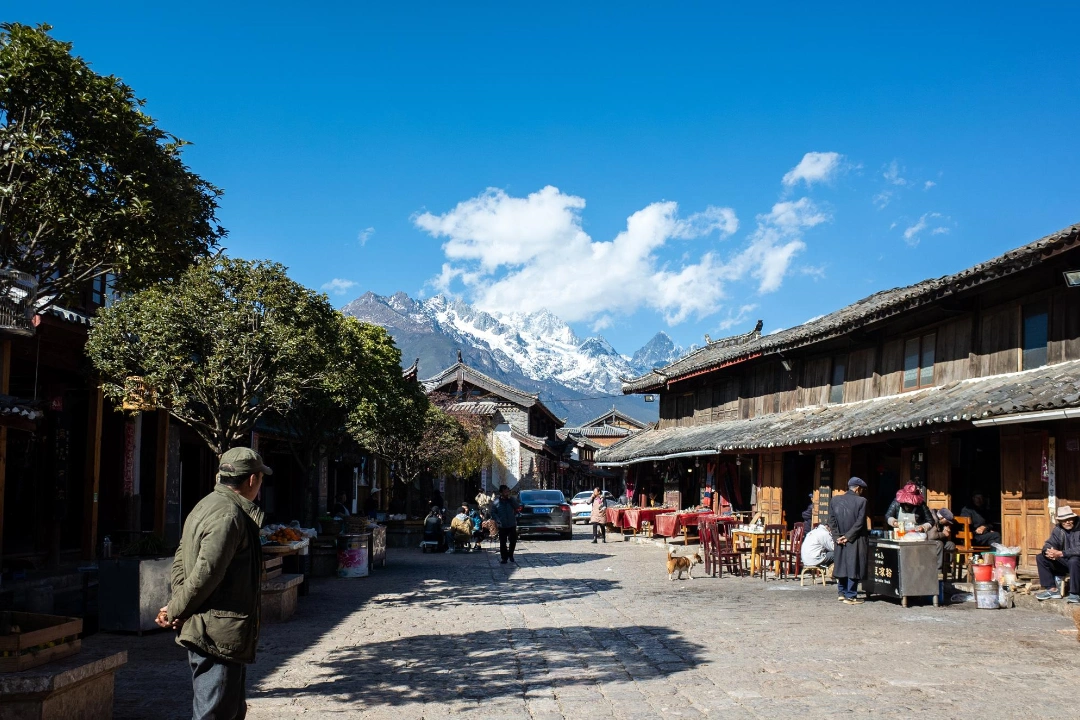
Baisha Ancient Town
How the Mountain Tests You: Getting There and Getting Ready
Bus, Taxi or Tour: Choose Your Route Wisely
Getting to Jade Dragon Snow Mountain sounds complicated—but it really isn’t. I’ve done it the budget way, the comfortable way, and even the touristy way. The best part? You’ve got options.
The first time, I hopped on Bus 7 from Lijiang Old Town. It cost 2 RMB—basically pocket change—but it dropped me off a good distance from the actual ticket center. I didn’t mind the walk, though. Locals selling snacks waved me along, and I picked up a sticky dumpling to eat later. The path was scenic but long, especially under the midday sun.
On my second visit, I booked a private Didi ride—cost me about 80 RMB, and it shaved 40 minutes off the journey. Way better if you’ve got kids or luggage. Some friends I met at the hostel chose a group tour for 300–500 RMB, which covered transfers, a guide, and entry. That worked great for them—they didn’t have to think, just follow the flag and go.
But here’s what caught me off guard: no private cars are allowed beyond the transfer hub. Everyone has to board the official eco-bus (included in your park ticket). So even if you drive or take a taxi, you’ll all end up on the same green shuttle heading up the mountain.
Whether you want to chase clouds or just grab some more dragon boat festival food snacks at the park entrance, plan your timing. After 9 AM, traffic around the hub turns into chaos. I learned that the hard way—sitting in a taxi jammed behind 12 other vans.
Park Entry, Cable Cars, and What to Book in Advance
Now, let’s talk tickets. You’ll need two to get to the top: the Jade Dragon Scenic Area Entry Ticket (180 RMB) and the Glacier Park Cable Car Ticket (180 RMB). I bought mine on Ctrip the first time, then later just had my hotel handle it. Both worked, but I recommend booking 2–3 days in advance if you’re going in summer.
Don’t try to skip the eco-bus system—it’s mandatory and included in the park ticket. I saw someone try to walk in once; the security guard just waved them straight back. Once inside, you’ll face another choice: three different cable car routes.
- Glacier Park Cable Car: This is the main one—takes you up to 4,506 meters. The views are unreal.
- Spruce Meadow: Lower altitude, better for families and soft hikes.
- Yak Meadow: My personal favorite. Quieter, no tour buses, just yaks and clouds.
Don’t make the mistake some tourists do. I met a German couple who thought they were booking Glacier Park but accidentally bought Spruce tickets. By the time they figured it out, all Glacier slots were sold out. Heartbreaking.
Even if you’re not big on food, don’t skip the sticky rice dragon boat festival snacks at the entrance. They’re cheap, filling, and way better than anything near the top. Just eat before the ride—the cable car is steep, and trust me, bouncing around at altitude on an empty stomach is not fun.
- Cloudy Mountain Meadow
- Cable Car
Where the Mountain Watches You Sleep: Hotels, Cafés, and Silence
Banyan Tree Lijiang
I checked into Banyan Tree Lijiang late in the afternoon, just as the sun began painting the snowcaps pink. Stepping into my private courtyard, I couldn’t believe the view—Jade Dragon Snow Mountain stood right there, massive and still, like it had been waiting for centuries. That night, I curled up by the fireplace, hot tea in hand, feeling both spoiled and deeply grounded.
What I loved most wasn’t just the comfort—it was how the space felt connected to the mountain. The Naxi-style architecture, the scent of pine, even the spa menu seemed designed to slow you down and breathe with the altitude. I booked a massage after hiking, and honestly, it saved my legs.
Price Range: 2,000–3,000 RMB per night for a villa, and yes—it’s worth every yuan for that view.
The Rock Hotel Yunnan
The next night, I switched things up and stayed at The Rock Hotel in Shuhe. It felt like moving from a palace to an artist’s retreat. My room had a clean, modern design, but when I opened the balcony doors, there she was again—the snow mountain, quietly glowing at dawn. I sat there barefoot, sipping instant coffee from the minibar, still half-asleep, and just watched the clouds part.
What made this place special wasn’t luxury—it was clarity. The staff were relaxed, helpful, and full of local suggestions. One even drew me a map to a viewpoint tourists rarely find. This hotel might not make glossy brochures, but it’s the kind of place that ends up in your diary. And yes, they accept foreigners without issues.
Price Range: 500–1,000 RMB per night. Budget-friendly, but nothing about it feels cheap.
Yunshan View Café & Hilltop Café
You don’t have to spend big to drink in that mountain view. I found two cafés—Yunshan View and Hilltop—while wandering around Shuhe. I picked a spot by the window, ordered a creamy latte and a plate of local pickles, and just stared. Jade Dragon Snow Mountain felt almost too close. It was one of those rare café moments where you forget your phone and just sit still.
Locals were chatting quietly. A dog slept by the heater. The owner offered me a Naxi-style pastry on the house. That moment—warm hands, cold nose, mountain outside—was better than any travel ad. You’ll want to stay longer than expected.
Price Range: 30–50 RMB per drink. For the view? Basically free.
- Rock Hotel
- Rock Hotel
- Naxi cuisine
Off the Beaten Ice: Wunhai, Yak Meadow, and the Stories the Wind Tells
Wunhai Village & Yak Meadow: No Crowds, Only Clouds
I wanted quiet. Not the kind you find between tourist buses—but real, crisp, mountain silence. That’s how I ended up in Wunhai Village and Yak Meadow. No loudspeakers, no waiting lines—just clouds drifting across Jade Dragon Snow Mountain and the soft clink of cow bells somewhere out of sight.
In Wunhai, the Naxi-style wooden houses looked like time had forgotten them—in a good way. A local man invited me in for tea without asking my name. We sat on low stools, watching the steam rise. It felt like the mountain had exhaled and this was the calm afterward. Yak Meadow, just up the slope, opened up into a wide alpine plain, with grazing yaks and wildflowers that looked like brushstrokes on a canvas. No one else was around—just me, the wind, and the snow peaks watching.
Getting there wasn’t hard. A taxi from Shuhe cost me about 120 RMB round-trip, and my guesthouse helped set it up. Best part? No tickets needed, no tour groups in sight.
Lunch with Altitude: Melted Snow and Smoked Bones
You haven’t eaten mountain food until you’ve sat in a yak-herder’s hut, steam rising from a hotpot simmering over melted snow. That afternoon at Yak Meadow, a local couple served me their family version of Yunnan yak hotpot—smoked bones, wild mushrooms, and snowmelt broth. The flavor? Earthy, deep, unforgettable.
I asked the woman what made it taste so clean. She just pointed to the glacier. “We cook with what the sky gives,” she said, smiling. I tore a slice of yak meat and dipped it into a soy-chili sauce that nearly blew my head off. It was simple, raw, and totally different from the polished dishes in Lijiang. And yes, I brought a sticky dragon boat festival food parcel from town as backup—but I never needed it.
If you’re vegan or want something lighter, they sometimes stew herbs and mushrooms instead. Just ask. The cost was around 80 RMB per person, and they only take cash. Bring an appetite and your camera—but leave your rush behind.
Other Nearby Gems: Ganhaizi & Impression Lijiang
The next morning, I made a detour to Ganhaizi, not expecting much—and ended up staying for hours. This wide-open meadow, ringed with pines and still lakes, offers a totally different view of Jade Dragon Snow Mountain. Here, the peaks don’t loom—they glow. I watched a horse walk into the water and stand there, unmoving. Even my phone stayed quiet.
Later, back at the base, I caught the Impression Lijiang Show—and it surprised me. I’d expected something cheesy. Instead, what I saw was over 500 locals in traditional dress, performing under the actual sky with the snow peaks right behind them. Directed by Zhang Yimou (the guy who did the Beijing Olympics), this wasn’t just a show—it felt like the mountain itself was part of the cast.
You can book tickets here via Trip.com, priced around 280–320 RMB depending on seating. Totally worth it if you want a last memory that blends myth, music, and mountains into one.
- Yak Ping
- Yak meat
- Impression of Lijiang
Above the Clouds, the Mountain Teaches Its Own Rules
Bring an Oxygen Can, Always
Let me be blunt—altitude sickness hit me fast. We’d just stepped off the cable car at 4,506 meters, and my head started spinning. I’m young, I hike, I thought I was fine. But Jade Dragon Snow Mountain doesn’t care. The air gets thinner, and your body knows it.
The smart ones were prepared. I saw travelers pull out oxygen cans like they were sipping soda. You can buy them for around 40 RMB at the base station or even in Lijiang Old Town. Some tours include a can. Honestly, I’d bring two next time. The mountain is beautiful, but gasping for air takes the magic out real quick.
Locals told me that even seasoned hikers get hit. So don't assume you’ll be fine. Take breaks, sip water, and avoid alcohol. I munched on a local dragon boat festival food rice ball between rests. It helped more than I thought. Also, move slowly. This isn’t a race—it’s a dialogue with the mountain.
What to Pack: Layers, Sunglasses, Sunscreen
I’ve been to snowy places before, but Jade Dragon Snow Mountain was something else. One minute I was sweating in Lijiang, the next I was freezing in wind that felt like knives. Layering is the key. I wore a base layer, fleece, and a windproof jacket. Gloves helped too. You’ll thank yourself later.
But the real enemy? UV rays. Up here, the sun isn’t just bright—it’s brutal. My lips cracked, and I regretted not packing SPF lip balm. Sunglasses are a must. I saw a guy using his phone as a shade—bad idea. The snow reflects the sun like a mirror, and your eyes will hate you.
And yes, snacks. I packed some sticky rice dragon boat festival food that stayed soft even in the cold. It kept my energy up. Altitude drains you, but staying warm and fueled makes the climb way more fun.
Don’t Trust Lijiang Weather Apps
Before the trip, I checked three weather apps. All said sunny. By the time we reached the cable car base, clouds rolled in fast, and we were hit with sleet and hail—yes, both. Locals weren’t surprised. “This is Jade Dragon,” one smiled. “She changes her mood fast.”
The issue is simple: mountain weather is its own beast. Lijiang’s forecast covers the town, not the peak. Conditions up top shift hourly. I saw a couple arrive in shorts and sandals. Ten minutes later, they were shivering and begging to borrow scarves.
Always dress for the worst and hope for the best. I carried a small rain poncho, extra socks, and a change of gloves. I also had a dry bag for my phone and camera. Trust me, even the most scenic spot loses charm when your fingers freeze. I was glad to sit under shelter, eating my last dragon boat festival food dumpling, waiting for the snow to pass.
Frequently Asked Questions (FAQs)
Q:Where’s the best place and time to see the golden sunrise over Jade Dragon Snow Mountain?
Locals call it “日照金山”—when the first sunlight hits Jade Dragon Snow Mountain and turns the peaks gold. I didn’t believe the hype at first. But the morning I caught it? Absolutely unreal.To see it right, you need two things: a clear sky and the right angle. I stayed overnight at The Rock Hotel in Shuhe, and the staff told me to wake up by 6:10 AM in summer. They even brewed coffee early. From the rooftop, I watched the peaks slowly turn from blue to glowing gold. For a moment, the whole mountain looked like it had caught fire.If you want the full view, drive or Didi to Yunshan Ping or Ganhaizi meadow. These spots sit at a lower elevation with wide horizons—ideal for watching the sun creep across the snow. I met a couple from New Zealand who brought a drone and caught stunning shots from there. But even without tech, the moment stuns you quiet
Q: What’s the best time to visit Jade Dragon Snow Mountain?
The best time to visit Jade Dragon Snow Mountain is during the spring (April to June) or autumn (September to November). These seasons offer pleasant weather, clear skies, and fewer crowds. During the summer, it can still be chilly at high altitudes, but it's the perfect time for snow-capped mountain views. Avoid visiting in the winter if you're not accustomed to freezing temperatures or high altitudes.
Q: How difficult is it to climb to 4,680 meters?
While the hike to 4,680 meters isn't incredibly long, it can be quite challenging due to the steep ascent and the high altitude. It's important to be prepared for altitude sickness. Most people take the cable car to 4,506 meters and consider hiking further to 4,680 meters if they feel fit. The air is thinner, and the hike can be tiring, so take it slow, stay hydrated, and use oxygen if necessary.
Q: Can I visit Jade Dragon Snow Mountain independently, or do I need a guide?
While it's possible to visit Jade Dragon Snow Mountain independently, I highly recommend hiring a local guide for the best experience. A guide can help navigate the area, share local stories and legends, and ensure your safety, especially when hiking at high altitudes. If you're not familiar with the mountain's terrain or culture, a guide will enhance your visit significantly.
Q: Are there any restrictions or safety tips for visiting the mountain?
Yes, there are a few safety tips and restrictions to keep in mind. First, always bring an oxygen canister, especially if you're planning to go to higher altitudes. The air is thin, and even healthy individuals can suffer from altitude sickness. Additionally, wear layers, sunscreen, and sunglasses to protect yourself from the elements. Don’t trust local weather apps—weather conditions on the mountain can change rapidly. And, of course, always respect the local culture and traditions.
Q: How do I buy tickets for Jade Dragon Snow Mountain?
Tickets for Jade Dragon Snow Mountain can be purchased online through platforms like Ctrip or Mafengwo, or directly at the entrance. For the cable car, which takes you up to the 4,506-meter Glacier Park platform, tickets cost around 180 RMB. It's recommended to buy your tickets in advance during the high season, as the cable cars and park can get crowded. The entrance fee is also 180 RMB, which includes the eco-bus shuttle that will take you to the base.
Q: Is it safe to visit Jade Dragon Snow Mountain during the winter?
Winter visits are possible, but be prepared for harsher weather. Temperatures can drop below freezing, and snowstorms are not uncommon at the higher altitudes. If you choose to visit in winter, ensure you have the proper gear: layers, waterproof clothing, and good shoes. It's also important to carry extra oxygen and take breaks regularly to avoid altitude sickness.
Want more China travel ideas? Don’t miss our insider guides to Beijing, Shanghai, Guangzhou, and Chengdu—real tips, no fluff.
